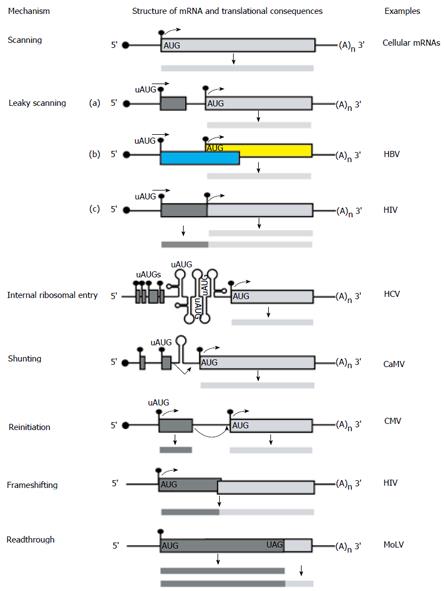Copyright
©2014 Baishideng Publishing Group Inc.
World J Gastroenterol. Jul 7, 2014; 20(25): 7993-8004
Published online Jul 7, 2014. doi: 10.3748/wjg.v20.i25.7993
Published online Jul 7, 2014. doi: 10.3748/wjg.v20.i25.7993
Figure 3 Alternative translation initiation mechanisms used by viruses and cellular mRNAs in eukaryotic cells.
The line with a filled circle represents a capped and polyadenylated mRNA with a 5′ UTR and open reading frame. The filled circle represents the cap, filled rectangle denotes an open reading frames, (A)n represents the polyA tail and the curved arrowhead denotes translation initiation. Various strategies for initiating protein synthesis on each mRNA and for decoding its information are outlined. The most common strategy used for cellular mRNAs is the scanning model. Other unconventional translational strategies employed by eukaryotes and exploited by infecting viruses included internal ribosomal entry, shunting, leaky scanning, reinitiation[54], frameshifting and readthrough[53]. Human immunodeficiency virus and CaMV are related to hepatitis B virus[55].
- Citation: Chen A, T-Thienprasert NP, Brown CM. Prospects for inhibiting the post-transcriptional regulation of gene expression in hepatitis B virus. World J Gastroenterol 2014; 20(25): 7993-8004
- URL: https://www.wjgnet.com/1007-9327/full/v20/i25/7993.htm
- DOI: https://dx.doi.org/10.3748/wjg.v20.i25.7993









